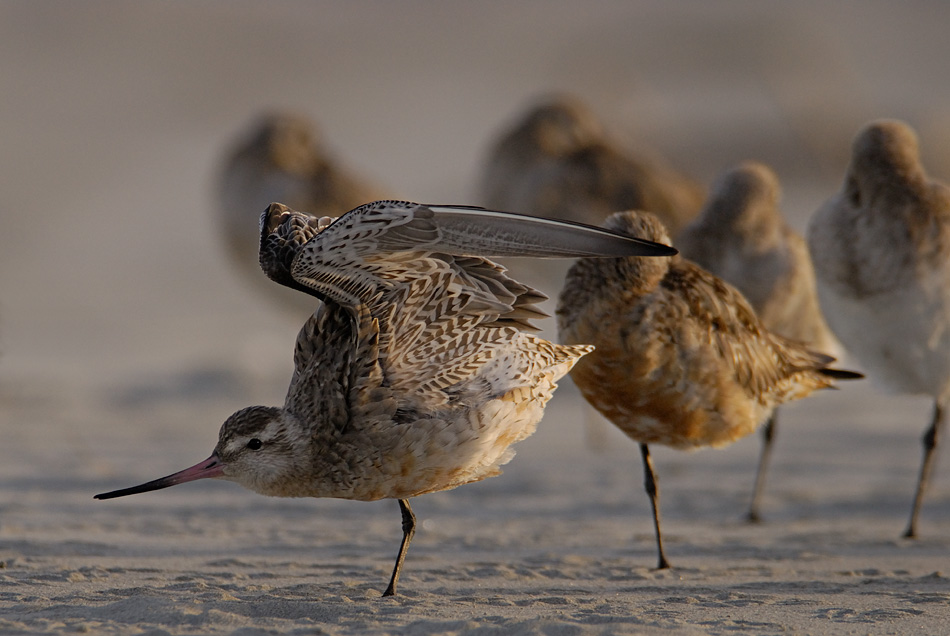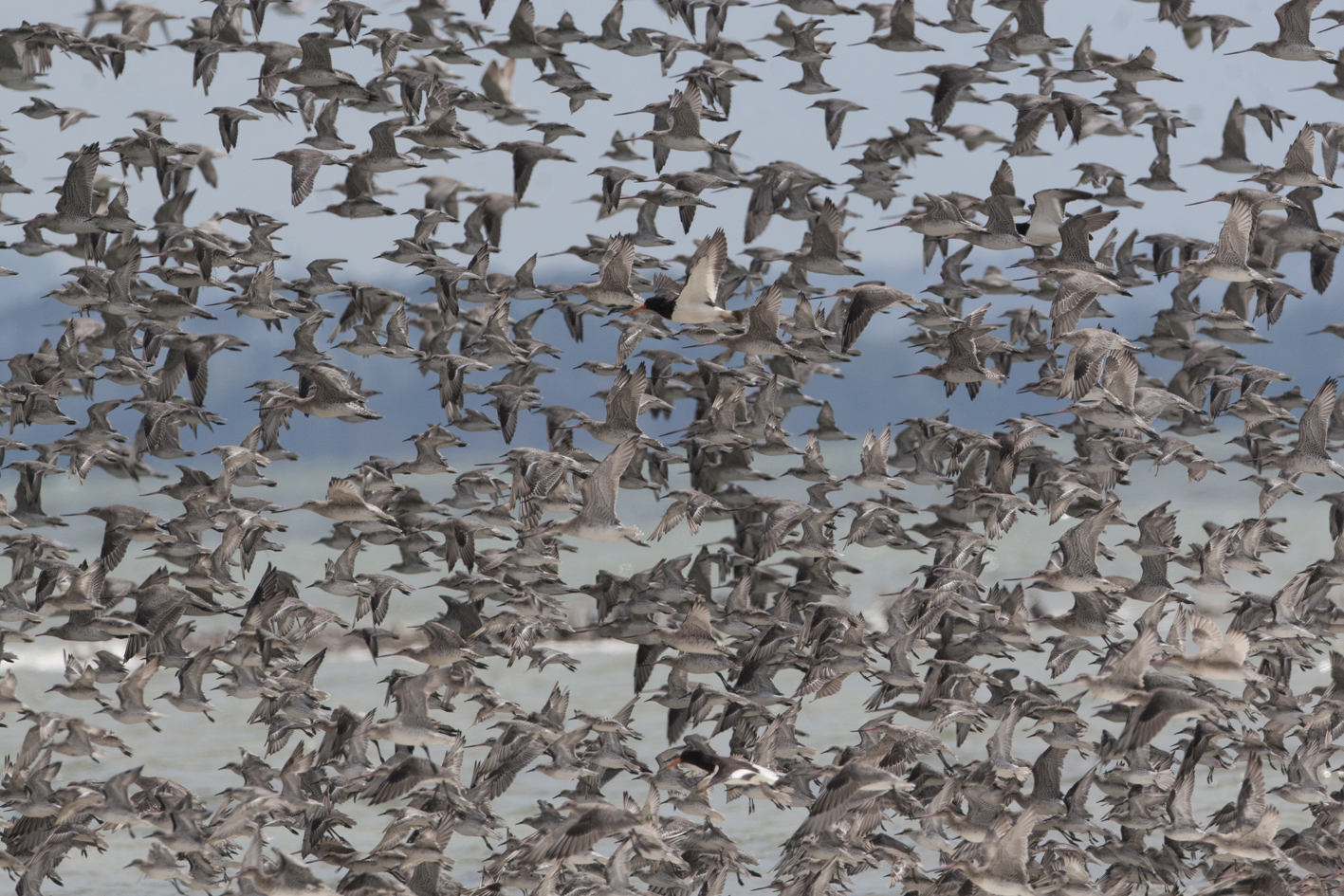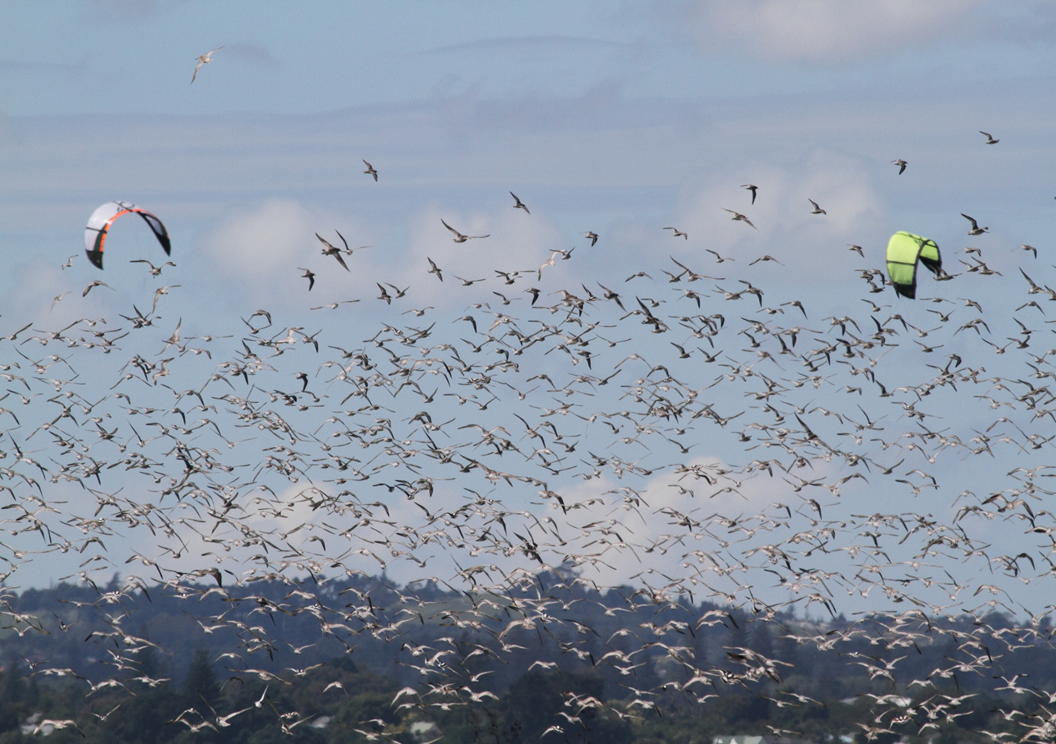What does a bird need to do to get a rest around here?
Although the bar-tailed godwit has to hand over its crown as Bird of the Year to the kōkako, we felt it wouldn’t be right to do so without a reminder of how incredible these birds are and why we should let them roost in peace.
Every September around 100,000 godwits (kuaka) arrive in New Zealand from Alaska after breeding. They are famished, skinny and exhausted after a journey of over 11,000kms, which they do in less than 10 days.

A bar-tailed godwit stretches its wings after a long flight (Photo by Craig McKenzie)
Some years ago, a female bar-tailed godwit, implanted with a tiny satellite tracker, lifted off from her Alaskan breeding ground and flew south 11,680 kilometres, nonstop, until she reached her winter home in New Zealand. Called E7 by the scientists who monitored her, she flew more than eight days without food, water or rest, on the longest direct flight by a bird ever documented. In fact bar tailed godwits have the longest migratory flight of any bird in the world and lose half their body weight in the process.

You’d think this kind of pedigree would earn them some serious respect and downtime. But alas no.
Despite this incredible feat, and the godwit’s 2015 status as Bird of the Year, many people and their pets disturb the bird’s crucial roosting time.
There are only a few roosting sites left for godwits in New Zealand, including the Firth of Thames, Whangarei Harbour and Ruakaka – also popular destinations for kiteboarders and dog walkers.

So let’s spare a thought for these endurance champions.
From January until March the godwits are focusing on having a good feed in preparation for their mammoth return journey. Any unnecessary flight during this time, particularly if they’re circling to avoid dogs or sea vessels, is using up their vital energy stores.
By all means, watch and enjoy these magnificent flocks of shorebirds. Come to places like the Miranda Shorebird Centre where you can learn more about them at the same. But otherwise please leave them to roost in peace.
